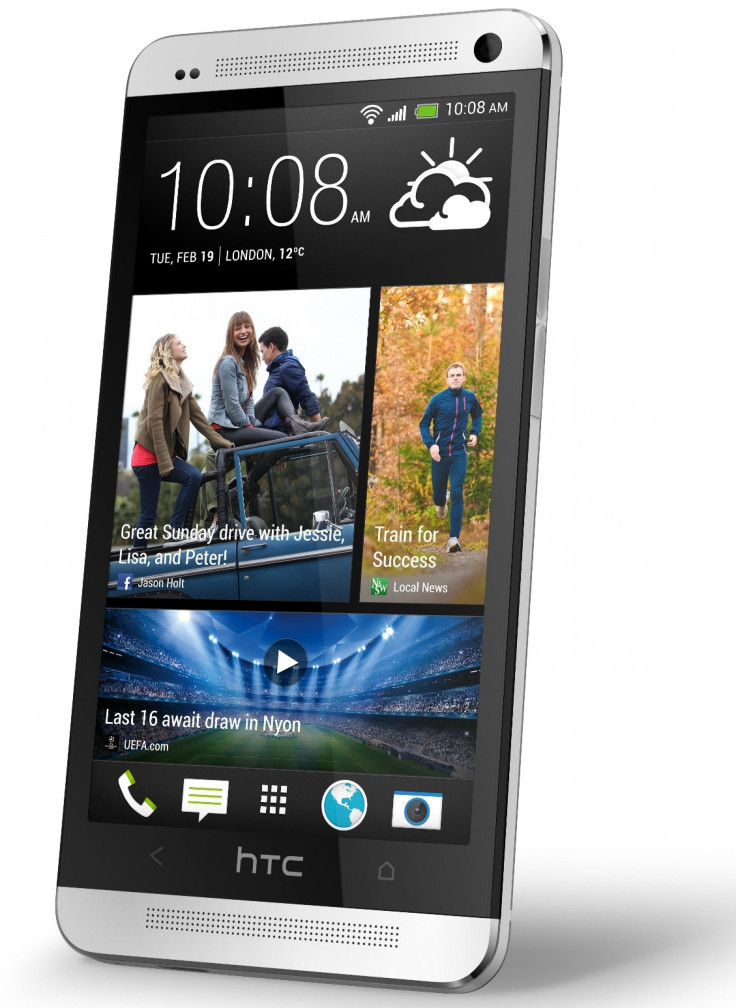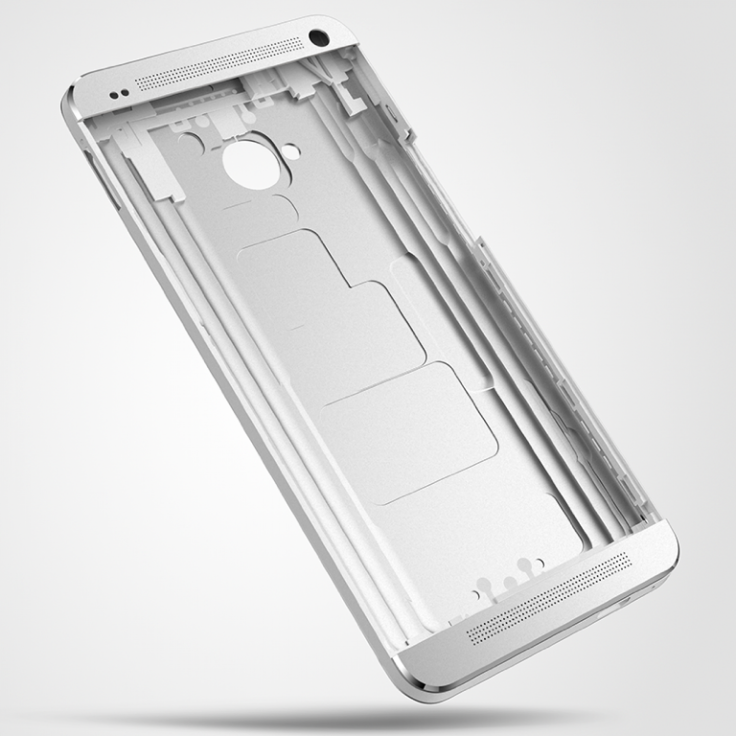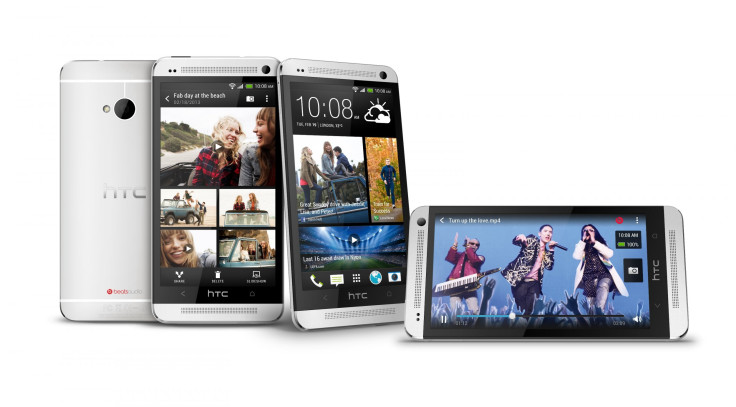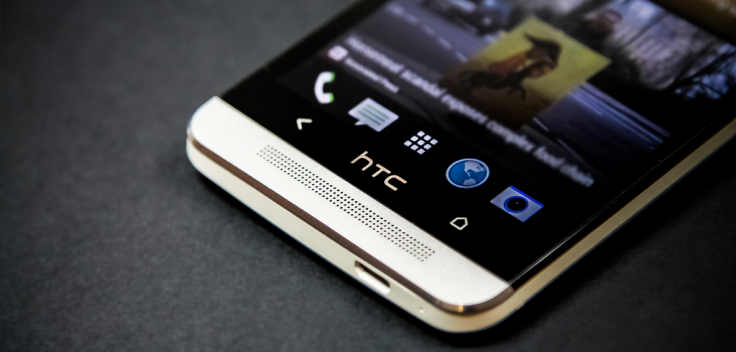HTC One: HTC Answers Questions About Its Flagship Phone, Sense Vs. The Google Play Edition, And The Company's Future

HTC hopes that the premium design and aluminum unibody construction of the HTC One will continue to help the device stand out amongst competitors. Tom Harlin, director of public relations for HTC North America, took time to discuss Sense as well as the Google Play version of the device, confirming that it will not have support for the IR-blaster remote control function for the near future.
In an exclusive interview with the International Business Times, HTC’s Harlin said that the company feels that the design of the HTC One is vital to its success.
“We think that great design is an important starting point for understanding smartphones, which we think can be complicated for a lot of users,” Harlin said. “I think, for a lot of consumers, smartphones can seen like a complicated industry. There are a lot of choices.”

HTC is happy with consumer reception and professional reviews of the One, and Harlin said that the company wants to be known for design. “The all-metal unibody, the camera quality, the audio and some innovative features like TV have been well received by critics,” he said. “For consumers, it's been a very good reception as well.”
Harlin noted that HTC started out making mobile devices as an original equipment manufacturer, or OEM for other companies like T-Mobile, having built the first device running Android, the T-Mobile G1. “In 2013, the real success for us is to put out one device across all four carriers,” Harlin said, “and have that device to be well-received by media, and to start growing a brand that consumers will recognize as important for innovation, and engaged around experiences that will make them feel like they are emotionally connected.”
To support that emotional connection, HTC has equipped the One with Zoe, which creates short animations using the device’s camera, and BoomSound, where a pair of dual, front-facing stereo speakers utilize Beats Audio equalizer software and a dedicated amplifier in an attempt to make the phone louder and clearer for music and videos than any other.
Harlin said that HTC designers have wanted the One to have the “most metal in a device on the market ... The ability to achieve that, and also have it work with technology like 4G LTE, is something we have wanted to do for a while.”

The Google Play edition of the HTC One was an attempt by the company to get larger exposure for their flagship smartphone. “Our desire is to get what is essentially the best hardware in the most hands possible,” Harlin said. “The ability to work together with Google, one of the largest companies in the world is definitely a big plus for us.”
No support for universal remote from HTC on the Google Play edition of the One
HTC had a lot of Android users asking for a stock version of the operating system on its devices, Harlin said, which led to the decision to create a Google Play edition of the HTC One. Harlin confirmed that the device’s included IR-blaster, which allows the HTC One to work as a universal remote control, would not be functional on the Google Play edition. He said that the company was “working to put API’s out there to allow developers to take advantage of features” like the IR-blaster, but he could not give a timeline for when the company would do so.
“With the device just being released to the market, the API's have not been released to developers,” Harlin said. “So it would be premature to place any timing against the development and consumer availability of features.”
Harlin said that the information released to app developers would allow them to utilize the IR sensor hardware in the HTC One in their own apps, but would not be able to provide the “Sense TV experience,” which includes TV pairing and the way the device displays program information. Owners of the Google Play edition of the HTC One will not “be able to download Sense TV from the Google Play store.”

When asked if features such as Sense TV or other aspects of HTC Sense would be made available to consumers at a later date, Harlin said that since HTC is more than a skinned version of Android, adding the features to Google Play editions of the HTC One would be impossible.
“Sense is deeply integrated with Android OS and the hardware running throughout the experience on our devices - homescreen, e-mail, calendar, camera, audio," and so on. "So it much more than an app and not possible to download as an app,” Harlin said.
When I asked Harlin how HTC felt about criticisms from Android users that the company was often late to update their devices, or not support them for long enough, he said that HTC works to ensure every upgrade improves the user experience.
“That means for every software update, even incremental updates, we need to ensure that we’re addressing hardware constraints, adapting for carrier specific customizations and that we’re allowing time for testing by HTC and partners,” Harlin said. With the “breakthrough camera and audio experiences” on the HTC One, Harlin said the company wanted “to ensure those experiences are as good or better when we provide an update, and that the network connectivity, voice quality, and so on, also operate optimally.”
When asked what consumers can expect as far as HTC updates in the future, Harlin did not provide a timeline or say that devices would be updated for a certain period of time following their release. He said that consumers “can expect that we'll continue to drive for innovative and quality mobile experiences with each Android or HTC Sense update.”

The HTC One only includes two buttons at the bottom of the screen rather than the three found on most Android smartphones. “We wanted to give customers an easy-to-use Android experience, and one that drives the innovation in hardware and design. The decision to use two buttons was part of that.”
The primary buttons used by consumers, Harlin said, are the “Home” and “Back” buttons, adding that the third button in many Android smartphones is a reveal function. HTC One users can utilize the reveal function by double-tapping the “Home” icon.
The next flagship device from HTC
Harlin said that he could not say specifically how HTC would top the One next time around, but said that it would be from decisions made boldy in smartphone design. “Our designers -- they’re kind of design geeks, if you will -- they are always pushing the envelope.”
“It helps to be a company dedicated to design, and allow those designers the freedom and support they need to get their ideas out there,” Harlin said.
A version of the HTC One for Verizon Wireless subscribers will be available later this summer, he said, with no specific launch date. Google Play Store versions of the HTC One are currently only compatible with AT&T and T-Mobile.
© Copyright IBTimes 2024. All rights reserved.











